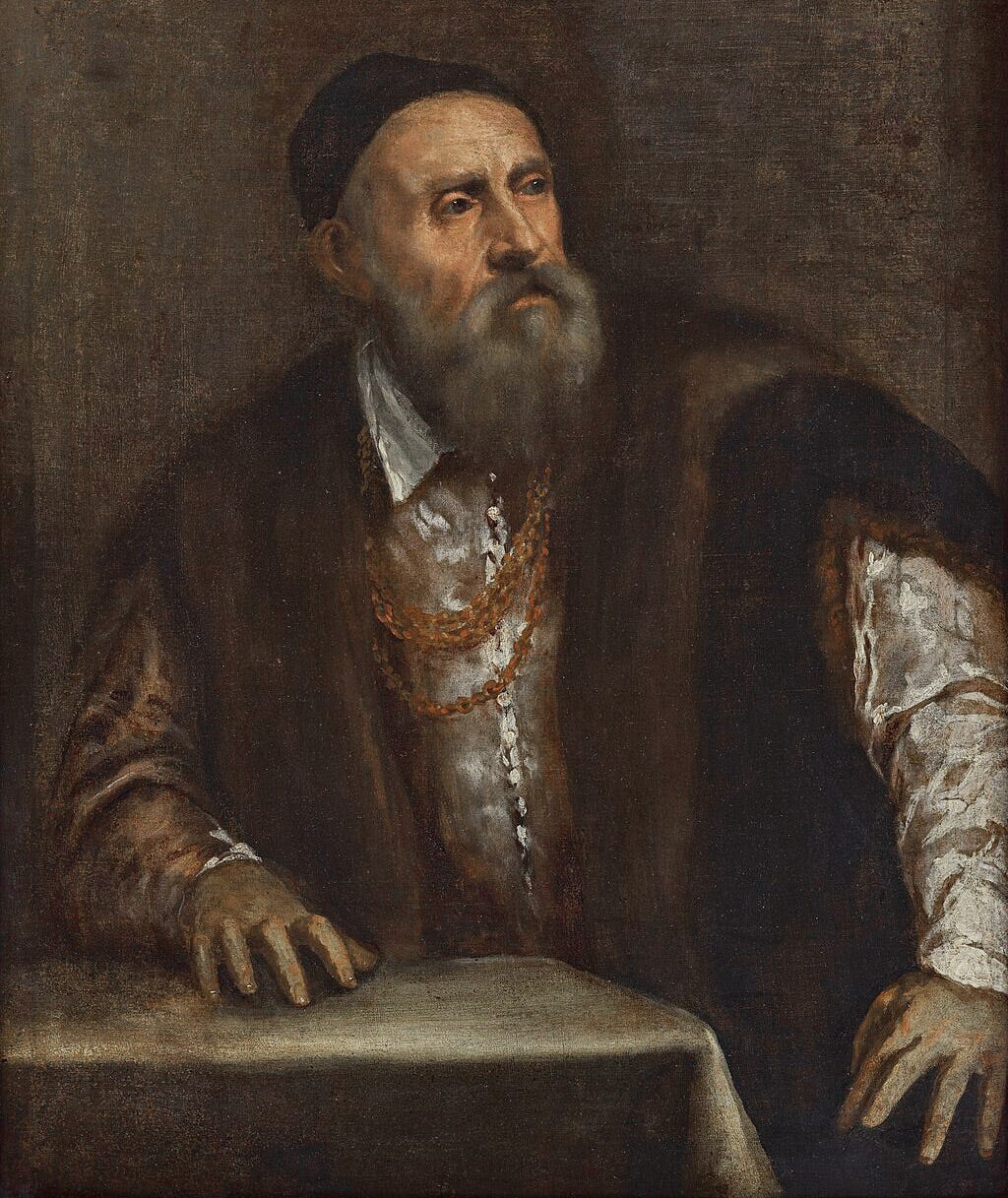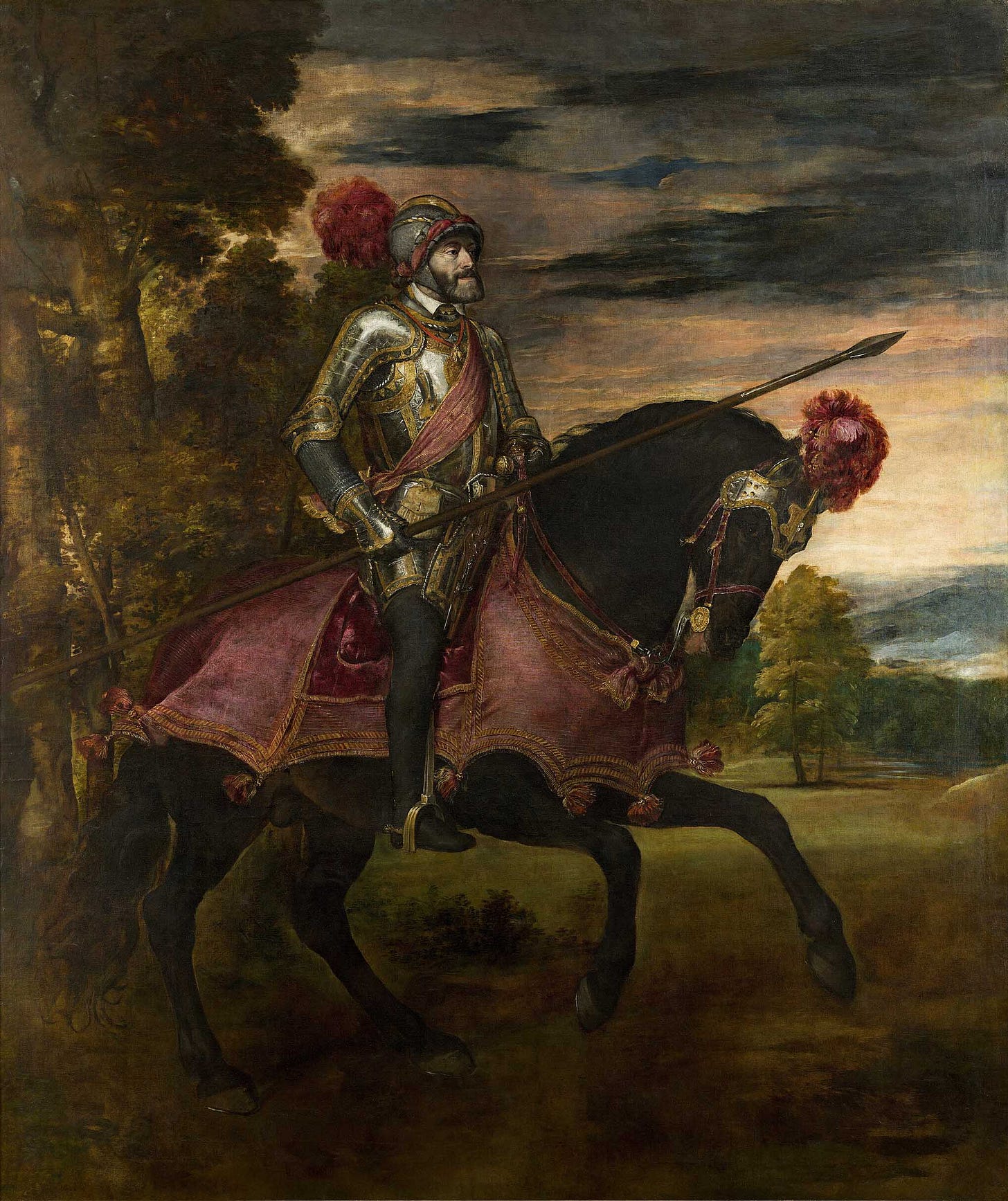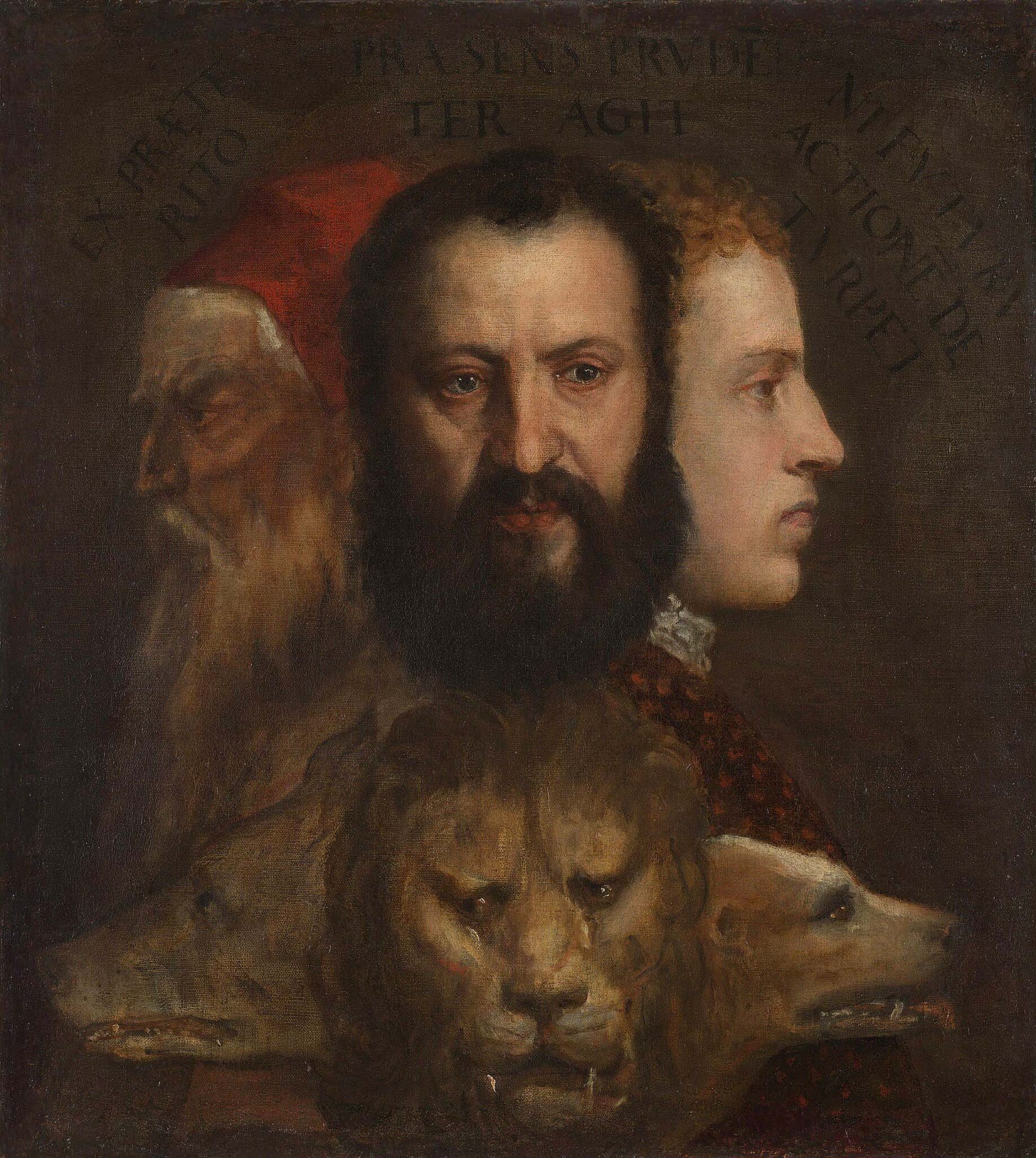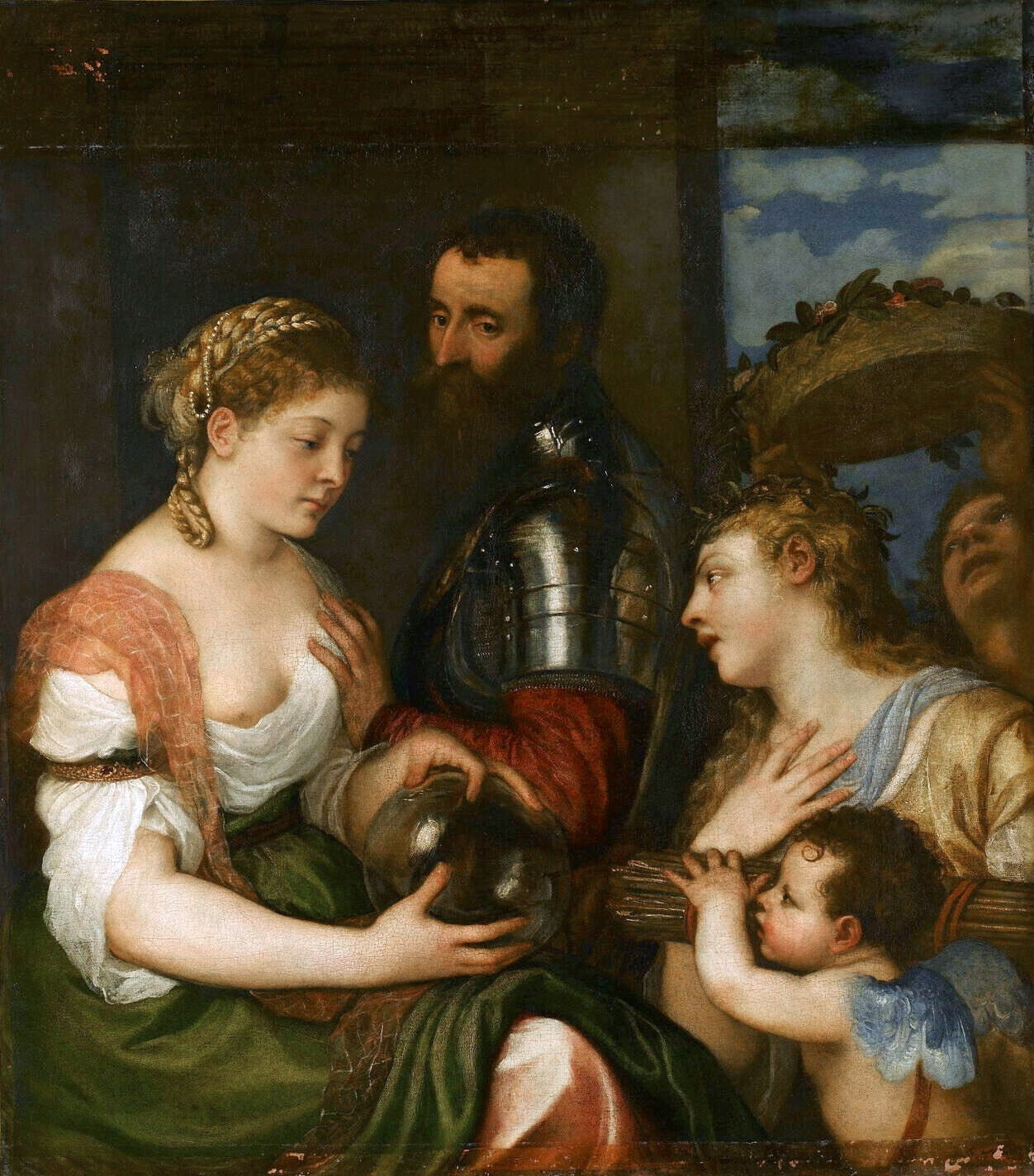The Rise & Fall of a Master
One fatal oversight can cost your family nearly everything...
Failure can be a blessing. Yet so too can success be a curse. After all, while failure can invite reflection, success can invite complacency and ruin.
If success is achieved swiftly, and the accompanying praise is prolonged, it can all too easily distract a man from his mortality, and the greatest asset he has to overcome it: his family.
It is a lesson that many men since the dawn of time have learned too late, and few more dramatically than one of greatest painters in Western history — Titian, the Maestro del colore (‘Master of Colour’). One of the first truly international painters who commanded the admiration of kings and emperors alike (and built a fortune to match), Titian embodies self-made success.
Yet Titian’s legend came at a steep personal price, for his neglect of one son and coddling of another would light the fuse of disaster, which erupted with a vengeance when the plague found him unprepared for his own death in 1576.
Today, we consider the rise and fall of a master, a man who was brought down by his own success, almost destroying his family in the process. He may have painted many masterpieces, but one forgotten piece above all others encapsulates everything that went wrong for Titian.
What follows is his story, and how you can avoid his same fate…
The Height of Success
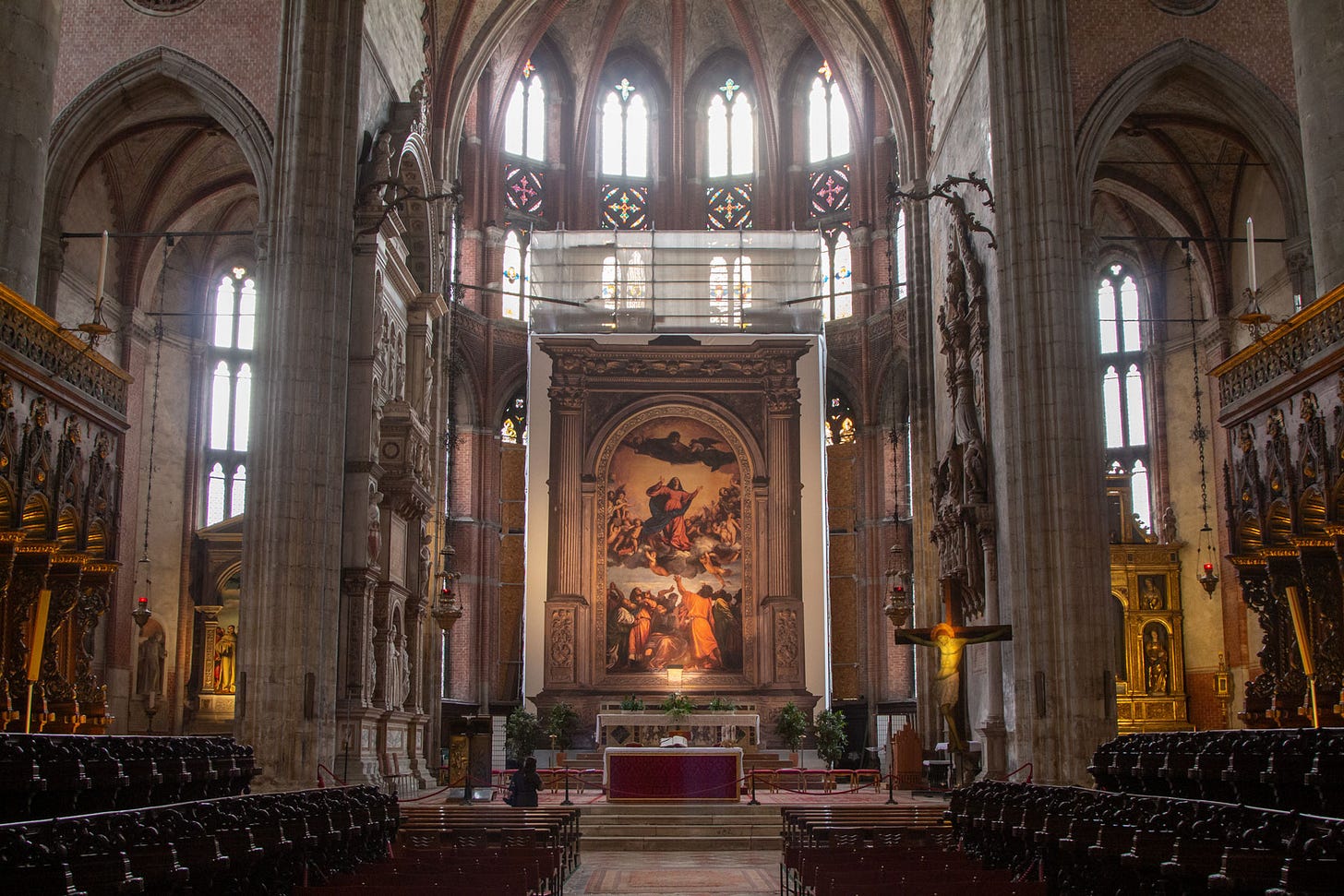
“There has been scarce a single lord of great name, or Prince, or great lady, who has not been portrayed by Tiziano, a painter of truly extraordinary excellence in this field of art”
Giorgio Vasari, Life of Titian
Even by the mere span of his years, the life of Tiziano Vecellio was something of an epic. While the paucity of records makes it difficult to verify his precise age, what is clear that between his birth on the slopes of the Dolomites, and his grisly end in the City of Canals, there elapsed near a century.
His early years had coincided with Raphael, Leonardo da Vinci and Michelangelo at the height of their glory, and he would outlive all of them. Yet Titian’s own greatness lay in building upon the work of each, and taking the Italian Renaissance international. He would achieve this both through exceptional talent and shrewd networking.
While the Vecellio family into which he was born was primarily involved in the local bureaucracy of Pieve, a still-today modest town in the mountains of Cadore, a fortunate uncle realised the young Titian would be wasted as a notary, and leveraged his contacts to bring the boy to Venice.
There, under the training of the Venetian masters Giovanni and Gentile Bellini, and Giorgione thereafter, Titian’s calling was shaped into mastery. So much so that by 1518, Titian was by far the most esteemed painter in all of Venice, a matter confirmed by his completion of the towering Assumption of the Virgin in the same year for Santa Maria Gloriosa dei Frari — the Basilica which would one day host his tomb.
Yet the true height of Titian’s career was enabled by his friendship with the irreverent poet Pietro Aretino, who in 1530 secured Titian passage to Bologna, and a meeting with the foremost monarch of the age — Holy Roman Emperor Charles V. Warming to the painter’s kindly demeanour, when Charles saw the portrait that Titian subsequently prepared for him, he realised at once that the talent before him was as lightning in a bottle:
“The work of Tiziano so pleased that all-conquering Emperor, that after he had once seen it he would not be portrayed by other painters”
Giorgio Vasari, Life of Titian
A deeply impressed Charles granted Titian an unprecedented honour, raising him to the rank of Count Palatine and Knight of the Golden Spur, sealing a bond that would mature too under the Emperor’s son, King Philip II of Spain. Through their dazzling patronage, and that of many others that imperial grace and the intrigues of Aretino had won for him, Titian would scarcely ever have an idle moment again. As all Europe vied to have its portrait painted by the Maestro del colore, prestige and pressure alike poured into his rapidly expanding workshop.
Success, therefore, and all its trappings, was doing everything to absorb Titian in his glamorous career, and distract him from all else. Unfortunately, it would succeed, and one painting above all captured both that success and the downfall it was setting the stage for…
A Destiny Secured?
Passing from the son of a rural notary to the portraitist of the Holy Roman Emperor was of course transformational.
Inundated with commissions from across Italy and beyond, Titian grew wealthier than almost any man who has ever chosen art as a profession. By the late 1530’s, Titian and his family were living a life of luxury from his stately home in the affluent Venetian district of Biri Grande, buoyed by the painter’s astute investments as he bought up swathes of productive land and properties between Venice and Cadore.
The Emperor’s painter was building an empire of his own, and the Vecellio family, it appeared, was not merely a successful family, but an emerging dynasty. It was a triumphalism that is on full display in the lesser known, but unusually personal work shown above.
Titian was at least sixty years old when he painted The Allegory of Prudence, under circumstances steeped in mystery to this day. He had not, however, slowed down at all in either his acceptance of commissions or the managing of his businesses. Yet Titian is almost certainly not depicting a wealthy client here, but his own family. It is indeed in this peculiar painting, ironically meant to portray optimism, that we can ‘see’ the seeds of family woe.
To the left, Titian himself stares out into the past. In the centre, his son Orazio Vecellio gazes out to the viewer and the present, while on the right, the youngest man Marco Vecellio, Titian’s nephew who he had also taken on as an apprentice, regards the future with determination. The beast below, likely added later, mirror the men, from the aged wolf on the left, to the vigorous lion in the centre and the energetic hound on the right. Reinforcing it all are the Latin words above:
EX PRAETERITO · PRAESENS PRUDENTER AGIT · NI FUTURUM ACTIONE DETURPET
"From the experience of the past, the present acts prudently, lest it spoil future action”
It is, therefore, a powerful statement and symbol of the confidence Titian had in the future course of Vecellio family. Yet it masks a far darker reality, for there is a glaring omission from the figures depicted in The Allegory of Prudence. Orazio Vecellio was not Titian’s only son. Nor was he even the eldest son. Yet Pomponio Vecellio, the true firstborn heir, appears nowhere in this painting, erased, it would seem, from his father’s past, present and future.
Said omission spoke to Titian’s most terrible mistake, and serves as a warning of what happens when you lose sight of what really matters…
A Forfeited Future
Keep reading with a 7-day free trial
Subscribe to INVICTUS to keep reading this post and get 7 days of free access to the full post archives.


